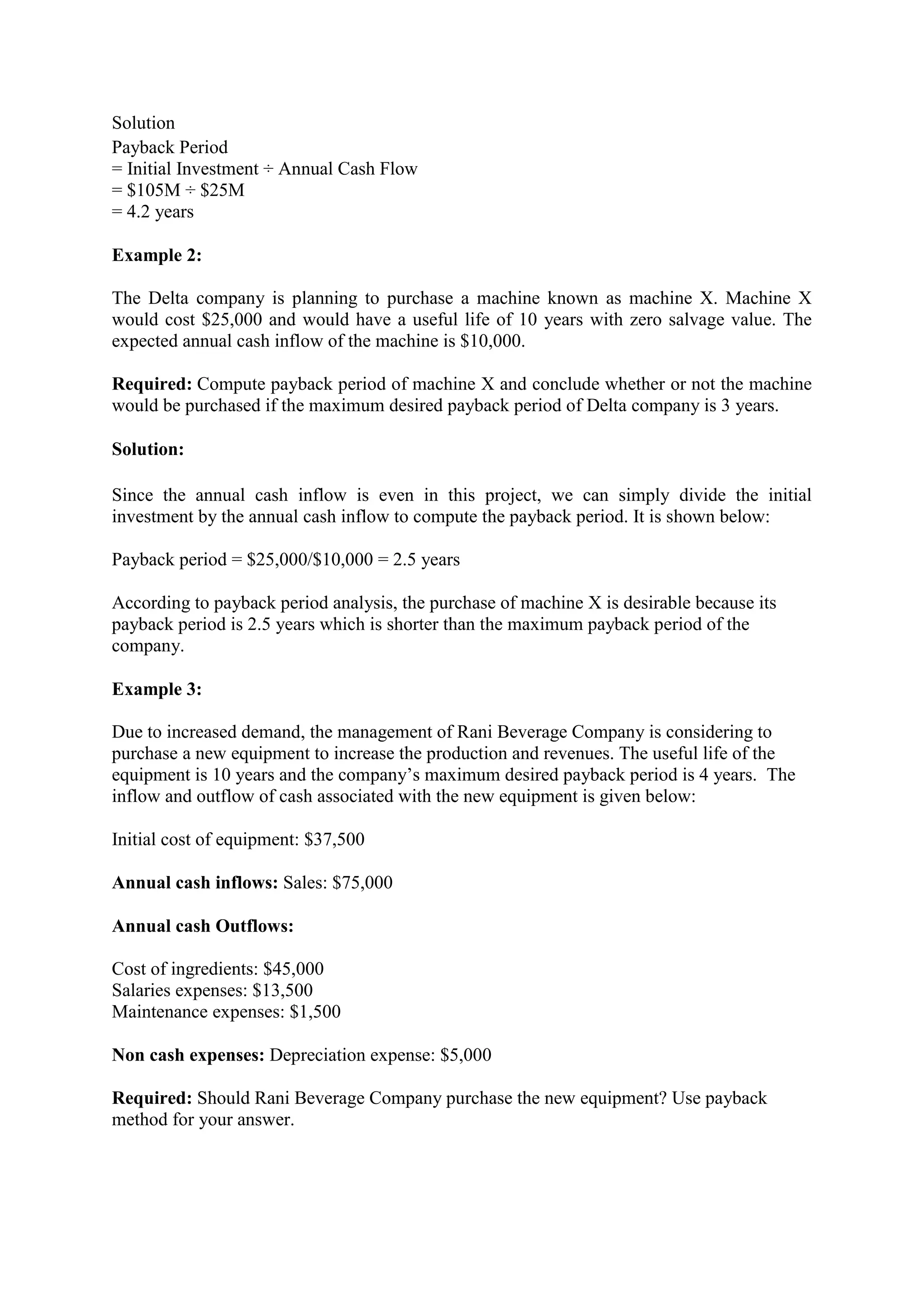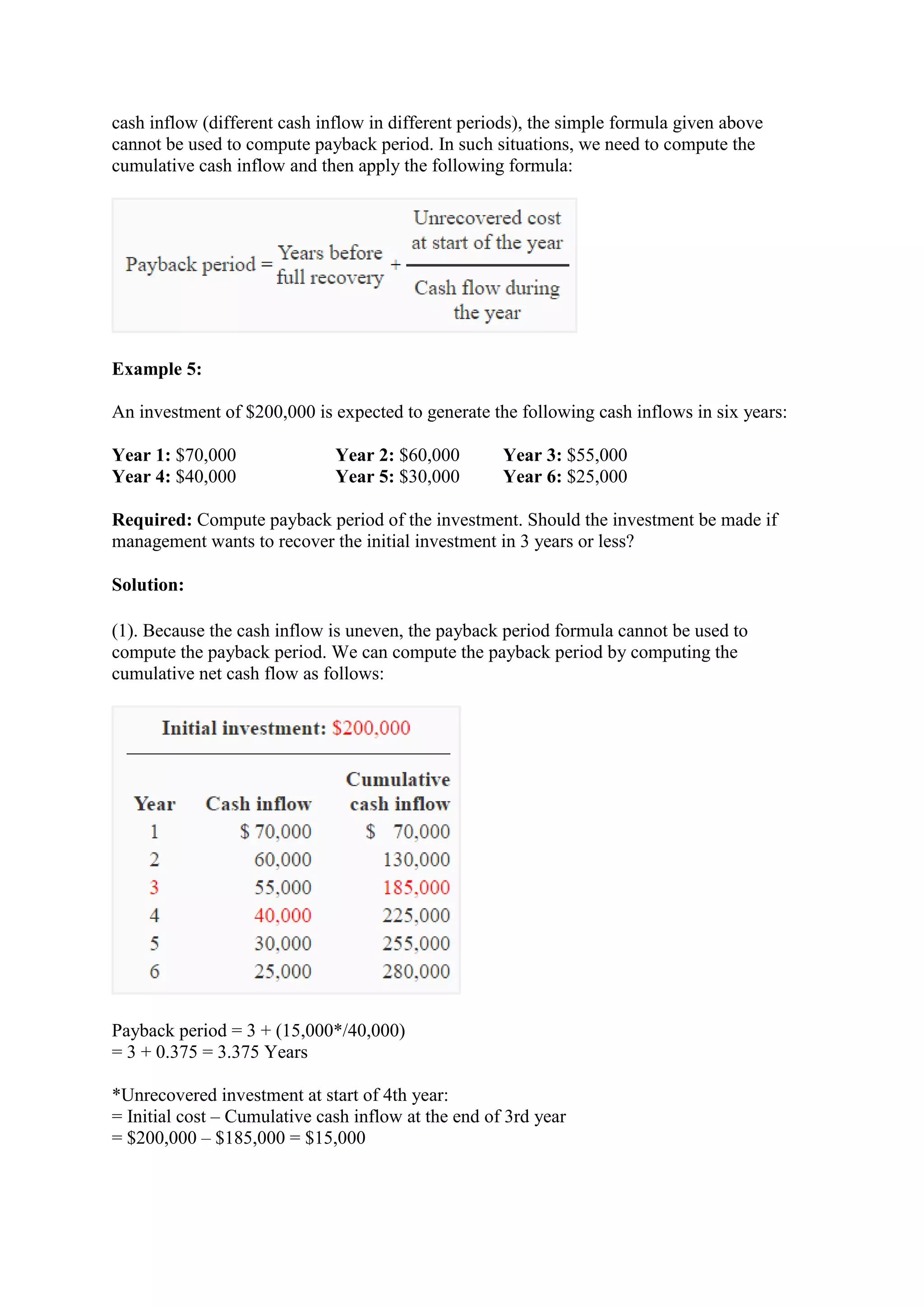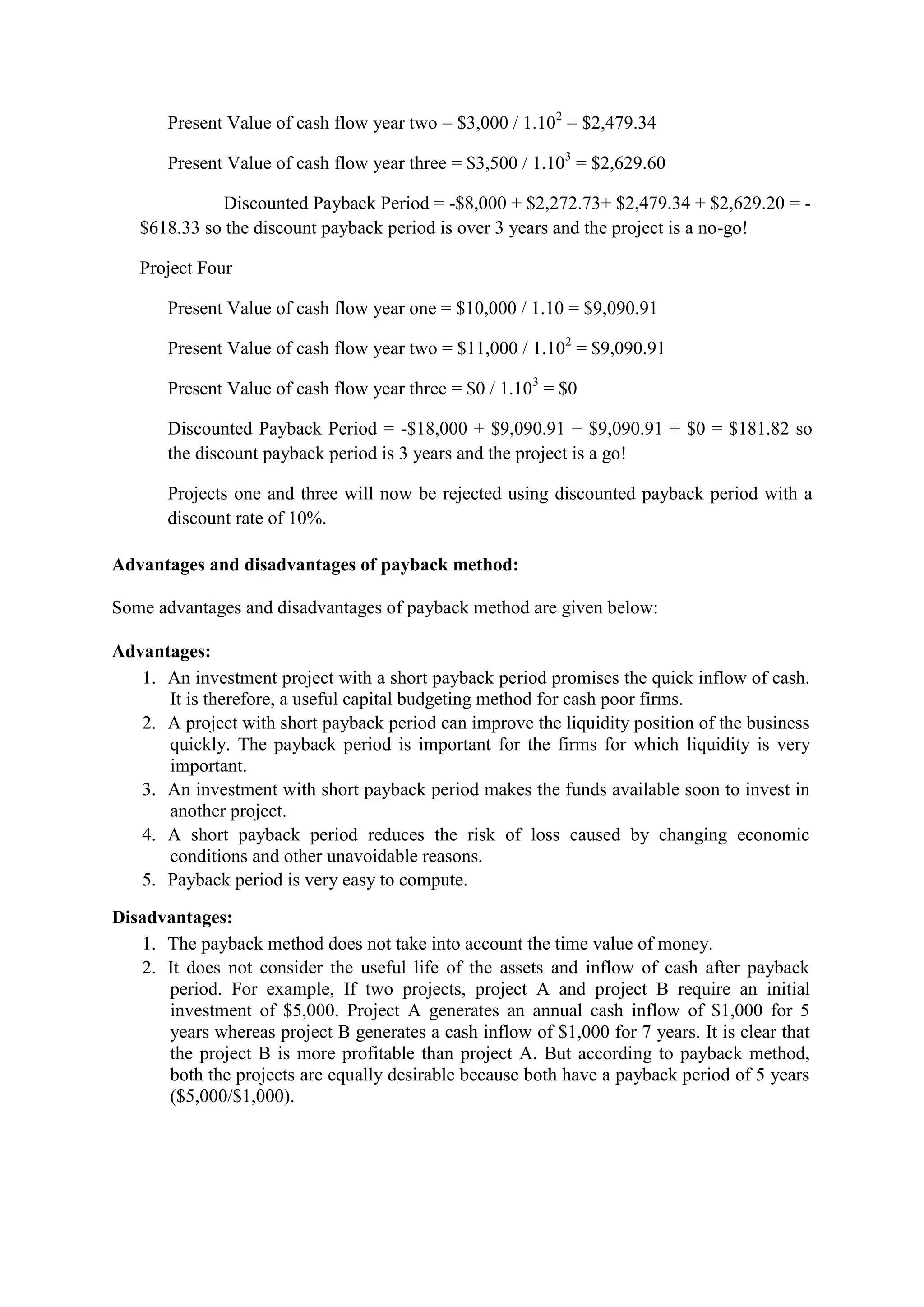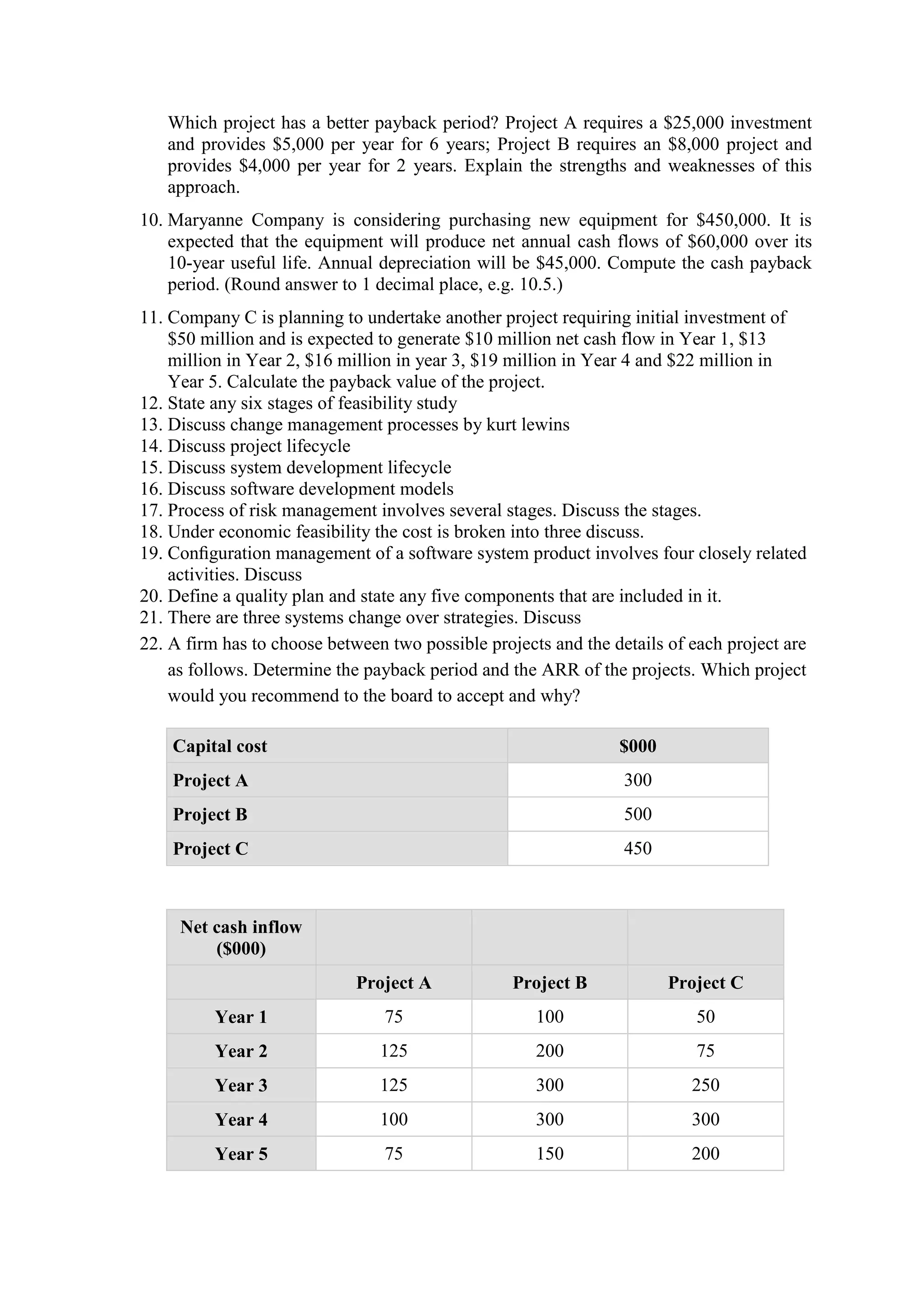The document discusses the calculation of payback period, which is a method used to analyze investment projects. It defines payback period as the time required for an investment to recover its initial cost through cash inflows. The document provides formulas to calculate payback period for both even and uneven cash flows. It includes examples of calculating payback period for various investment projects and compares investment alternatives based on their payback periods. The advantages of payback period are also discussed, such as its simplicity, as well as limitations like not considering the time value of money.














